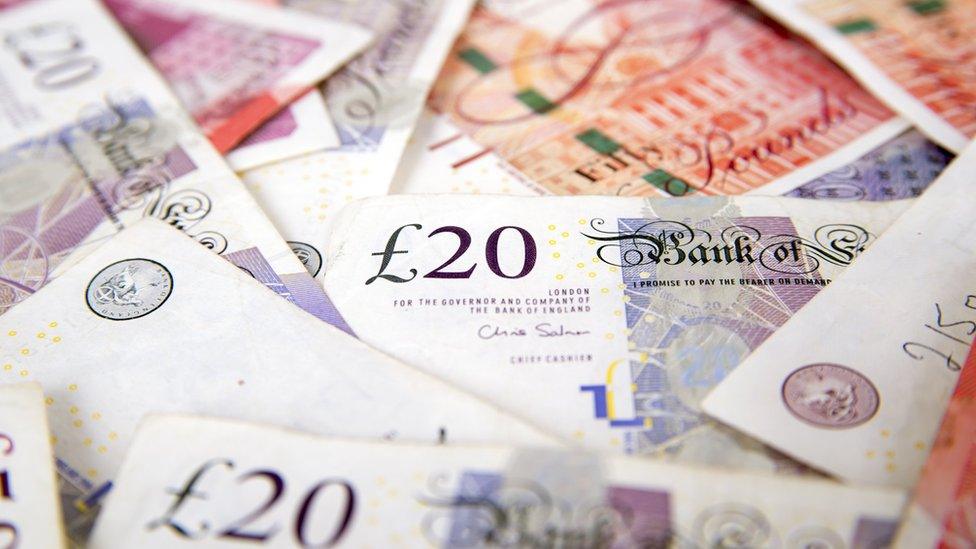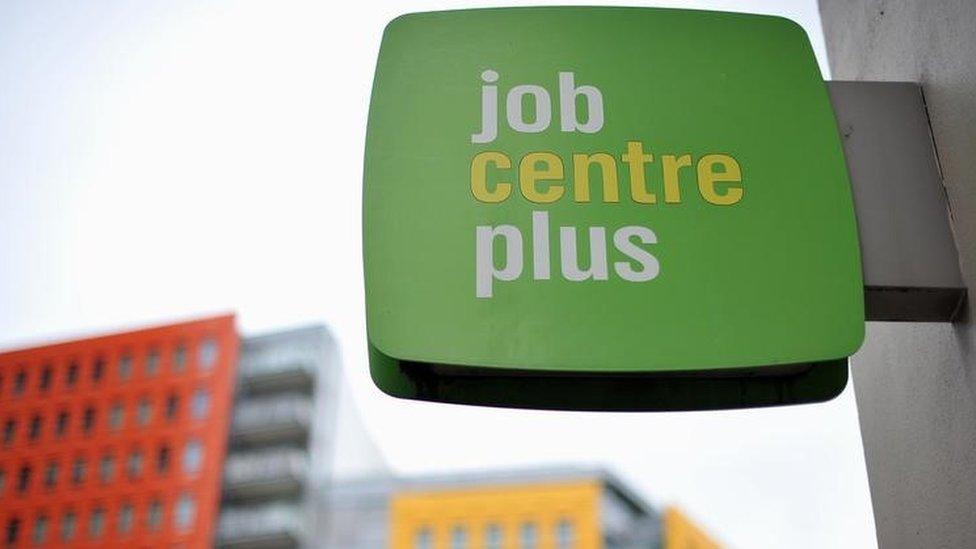UK government borrowing falls in December
- Published

The government borrowed £7.5bn in December, £4.3bn lower than the year before, official figures show.
The figure takes borrowing for the financial year to date to £74.2bn, £11bn lower than at this point in 2014.
The running total is already above the £68.9bn forecast for the whole fiscal year by the independent Office for Budget Responsibility (OBR).
However, government finances usually record a surplus in January as a large number of tax bills are paid then.
Both October and November's monthly borrowing figures had been higher than expected, leading some economists to doubt that the OBR's borrowing forecast for the current financial year would be met.
'Considerable uncertainty'
Commenting on the latest borrowing figures the OBR said in a statement: "Meeting our full-year forecast for 2015-16... would require borrowing to fall by £20.2bn in the year as a whole.
"That implies an overall surplus of around £5.5bn over the next three months, compared with a £4bn deficit in the same period last year."
"Our forecast does assume stronger growth in [tax] receipts in the remainder of the year... But considerable uncertainty nonetheless remains over prospects for the rest of the financial year."
In the 2014-15 financial year, borrowing was £89.1bn.
The latest borrowing figures from the Office for National Statistics (ONS) mean total public sector net debt - excluding support for public sector banks - is now £1.54 trillion, or 81.0% of GDP.
Chancellor George Osborne's overall plan is to eliminate the annual gap between government spending and revenue by the end of this decade.
'Overshoot the target'
This December's figure was lower than last year partly because last year the UK made a one-off payment to the European Union to reflect revised estimates to gross national income.
Paul Hollingsworth, UK economist at analysts Capital Economics said the chancellor still looked likely to miss the OBR's target: "Today's figures left the cumulative borrowing total for the fiscal year so far at £74.2bn, above the OBR's forecast of £68.9bn for the fiscal year as a whole.
"Granted, January typically sees a big surplus which should bring the total closer to this estimate. But borrowing still looks likely to overshoot the target this year, possibly by as much as £10.0bn."
David Kern, chief economist at the British Chambers of Commerce, said it was still possible the chancellor would meet the target - although the latest drop in the oil price could make that harder.
"After November's setback, the marked improvement in December makes it likely that public finances will show an overall improvement in the current financial year, and there is a chance that the OBR's forecast made in the Autumn Statement will be met."
But he added there was "no room for complacency".
"The weaker financial sector and depleted oil and gas output mean that the UK's ability to generate tax receipts has experienced a long-term decline," Mr Kern said.
Conversely, Michael Martins, an economist at the Institute of Directors, said the recent volatility in the financial markets could provide a short-term boost for the government by lowering the cost of borrowing.
In times of market turbulence, investors often turn to government bonds, a move that lowers the interest rates payable by the government on them.
New calculation
The ONS recently changed the way public debt was calculated to include debt carried by housing associations and other social housing providers. It will start to include this in the borrowing figures from next month.
The OBR's November forecast anticipated the effect on the public finances of the ONS decision.
It estimated that would add £4.5bn to borrowing in 2014-15 and £4.6bn in 2015-16, something it pointed out would have little effect on the year-on-year changes.
- Published20 January 2016

- Published19 January 2016
